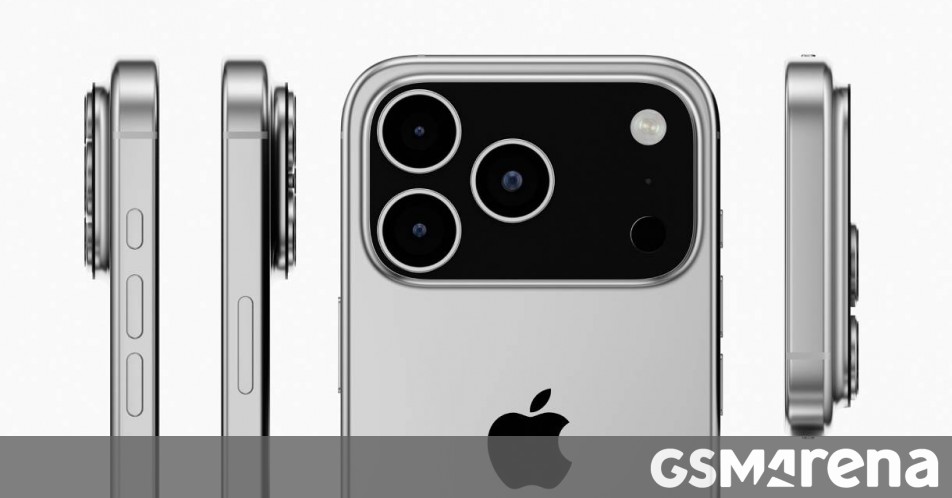The iPhone 17 series will feature significant design changes, including a new visor-style camera island on the Air and taller versions on the Pro and Pro Max. The Air replaces the Plus and will have a titanium frame for added strength, while other models will reportedly retain aluminum frames. Analyst insights suggest the Air might use a titanium-aluminum mix to balance cost and weight. Notably, Apple aims to make the iPhone 17 series carbon-neutral by 2030. Additionally, charging speeds could see an increase from 30W to 35W across all models, addressing previous slow charging issues.
This year promises to bring significant changes to iPhone design. Just yesterday, we discussed the new visor-style camera module for the iPhone 17 Air and the taller variant found on the iPhone 17 Pro and Pro Max (the standard model seems to be keeping the old design). Additionally, Apple is rumored to be updating the materials for all four models, potentially enhancing their wired charging speeds as well.
The Apple iPhone 17 Air will take the place of the Plus this generation. According to a report by analyst Jeff Pu from GF Securities, it will feature a titanium frame instead of aluminum (as seen in the Plus). Titanium, while heavier and more costly than aluminum, offers greater strength, which may be why Apple opted for it—the Air is expected to be just 5.5mm thick, and aluminum might not provide enough durability to prevent bending.
Speculative render: iPhone 17 Pro Max and iPhone 17 Air
Regarding the other models, the iPhone 17, 17 Pro, and 17 Pro Max are expected to have aluminum frames, according to Pu. This will mark a notable shift as earlier Pro models featured titanium (and prior to that, stainless steel). It’s worth noting that this report has been challenged, with some suggesting that the Pro versions will retain titanium.
One potential reason for reverting to aluminum is its eco-friendliness, coupled with a smaller carbon footprint. The iPhone 17 series could mark Apple’s first foray into carbon-neutral smartphones, aligning with the company’s goal of becoming fully carbon-neutral by 2030.

Speculative render: iPhone 17 Pro
While Apple has not disclosed the official charging ratings for the iPhone 16 series, testing reveals that the devices max out around 30W. For the 2025 generation, reports suggest that Apple aims to increase this to 35W across all four models.
This is a modest increase, but Cupertino has typically been cautious regarding battery specifications. Even a slight enhancement will be welcome, given that iPhones are known for having some of the slowest charging times among flagship devices—while Samsung and Google, which also tend to be conservative, achieve full charge significantly faster.
Source 1 | Source 2
